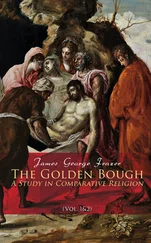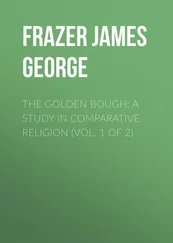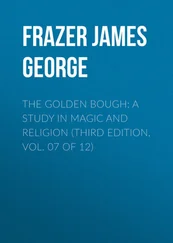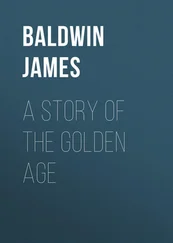Thus far we have been considering chiefly that branch of sympathetic magic which may be called homoeopathic or imitative. Its leading principle, as we have seen, is that like produces like, or, in other words, that an effect resembles its cause. The other great branch of sympathetic magic, which I have called Contagious Magic, proceeds upon the notion that things which have once been conjoined must remain ever afterwards, even when quite dissevered from each other, in such a sympathetic relation that whatever is done to the one must similarly affect the other. Thus the logical basis of Contagious Magic, like that of Homoeopathic Magic, is a mistaken association of ideas; its physical basis, if we may speak of such a thing, like the physical basis of Homoeopathic Magic, is a material medium of some sort which, like the ether of modern physics, is assumed to unite distant objects and to convey impressions from one to the other. The most familiar example of Contagious Magic is the magical sympathy which is supposed to exist between a man and any severed portion of his person, as his hair or nails; so that whoever gets possession of human hair or nails may work his will, at any distance, upon the person from whom they were cut. This superstition is world-wide; instances of it in regard to hair and nails will be noticed later on in this work.
Among the Australian tribes it was a common practice to knock out one or more of a boy’s front teeth at those ceremonies of initiation to which every male member had to submit before he could enjoy the rights and privileges of a full-grown man. The reason of the practice is obscure; all that concerns us here is the belief that a sympathetic relation continued to exist between the lad and his teeth after the latter had been extracted from his gums. Thus among some of the tribes about the river Darling, in New South Wales, the extracted tooth was placed under the bark of a tree near a river or water-hole; if the bark grew over the tooth, or if the tooth fell into the water, all was well; but if it were exposed and the ants ran over it, the natives believed that the boy would suffer from a disease of the mouth. Among the Murring and other tribes of New South Wales the extracted tooth was at first taken care of by an old man, and then passed from one headman to another, until it had gone all round the community, when it came back to the lad’s father, and finally to the lad himself. But however it was thus conveyed from hand to hand, it might on no account be placed in a bag containing magical substances, for to do so would, they believed, put the owner of the tooth in great danger. The late Dr. Howitt once acted as custodian of the teeth which had been extracted from some novices at a ceremony of initiation, and the old men earnestly besought him not to carry them in a bag in which they knew that he had some quartz crystals. They declared that if he did so the magic of the crystals would pass into the teeth, and so injure the boys. Nearly a year after Dr. Howitt’s return from the ceremony he was visited by one of the principal men of the Murring tribe, who had travelled some two hundred and fifty miles from his home to fetch back the teeth. This man explained that he had been sent for them because one of the boys had fallen into ill health, and it was believed that the teeth had received some injury which had affected him. He was assured that the teeth had been kept in a box apart from any substances, like quartz crystals, which could influence them; and he returned home bearing the teeth with him carefully wrapt up and concealed.
The Basutos are careful to conceal their extracted teeth, lest these should fall into the hands of certain mythical beings who haunt graves, and who could harm the owner of the tooth by working magic on it. In Sussex some fifty years ago a maid-servant remonstrated strongly against the throwing away of children’s cast teeth, affirming that should they be found and gnawed by any animal, the child’s new tooth would be, for all the world, like the teeth of the animal that had bitten the old one. In proof of this she named old Master Simmons, who had a very large pig’s tooth in his upper jaw, a personal defect that he always averred was caused by his mother, who threw away one of his cast teeth by accident into the hog’s trough. A similar belief has led to practices intended, on the principles of homoeopathic magic, to replace old teeth by new and better ones. Thus in many parts of the world it is customary to put extracted teeth in some place where they will be found by a mouse or a rat, in the hope that, through the sympathy which continues to subsist between them and their former owner, his other teeth may acquire the same firmness and excellence as the teeth of these rodents. For example, in Germany it is said to be an almost universal maxim among the people that when you have had a tooth taken out you should insert it in a mouse’s hole. To do so with a child’s milk-tooth which has fallen out will prevent the child from having toothache. Or you should go behind the stove and throw your tooth backwards over your head, saying “Mouse, give me your iron tooth; I will give you my bone tooth.” After that your other teeth will remain good. Far away from Europe, at Raratonga, in the Pacific, when a child’s tooth was extracted, the following prayer used to be recited:
“ Big rat! little rat! Here is my old tooth. Pray give me a new one.”
Then the tooth was thrown on the thatch of the house, because rats make their nests in the decayed thatch. The reason assigned for invoking the rats on these occasions was that rats’ teeth were the strongest known to the natives.
Other parts which are commonly believed to remain in a sympathetic union with the body, after the physical connexion has been severed, are the navel-string and the afterbirth, including the placenta. So intimate, indeed, is the union conceived to be, that the fortunes of the individual for good or evil throughout life are often supposed to be bound up with one or other of these portions of his person, so that if his navel-string or afterbirth is preserved and properly treated, he will be prosperous; whereas if it be injured or lost, he will suffer accordingly. Thus certain tribes of Western Australia believe that a man swims well or ill, according as his mother at his birth threw the navel-string into water or not. Among the natives on the Pennefather River in Queensland it is believed that a part of the child’s spirit ( cho-i ) stays in the afterbirth. Hence the grandmother takes the afterbirth away and buries it in the sand. She marks the spot by a number of twigs which she sticks in the ground in a circle, tying their tops together so that the structure resembles a cone. When Anjea, the being who causes conception in women by putting mud babies into their wombs, comes along and sees the place, he takes out the spirit and carries it away to one of his haunts, such as a tree, a hole in a rock, or a lagoon where it may remain for years. But sometime or other he will put the spirit again into a baby, and it will be born once more into the world. In Ponape, one of the Caroline Islands, the navel-string is placed in a shell and then disposed of in such a way as shall best adapt the child for the career which the parents have chosen for him; for example, if they wish to make him a good climber, they will hang the navel-string on a tree. The Kei islanders regard the navel-string as the brother or sister of the child, according to the sex of the infant. They put it in a pot with ashes, and set it in the branches of a tree, that it may keep a watchful eye on the fortunes of its comrade. Among the Bataks of Sumatra, as among many other peoples of the Indian Archipelago, the placenta passes for the child’s younger brother or sister, the sex being determined by the sex of the child, and it is buried under the house. According to the Bataks it is bound up with the child’s welfare, and seems, in fact, to be the seat of the transferable soul, of which we shall hear something later on. The Karo Bataks even affirm that of a man’s two souls it is the true soul that lives with the placenta under the house; that is the soul, they say, which begets children.
Читать дальше












